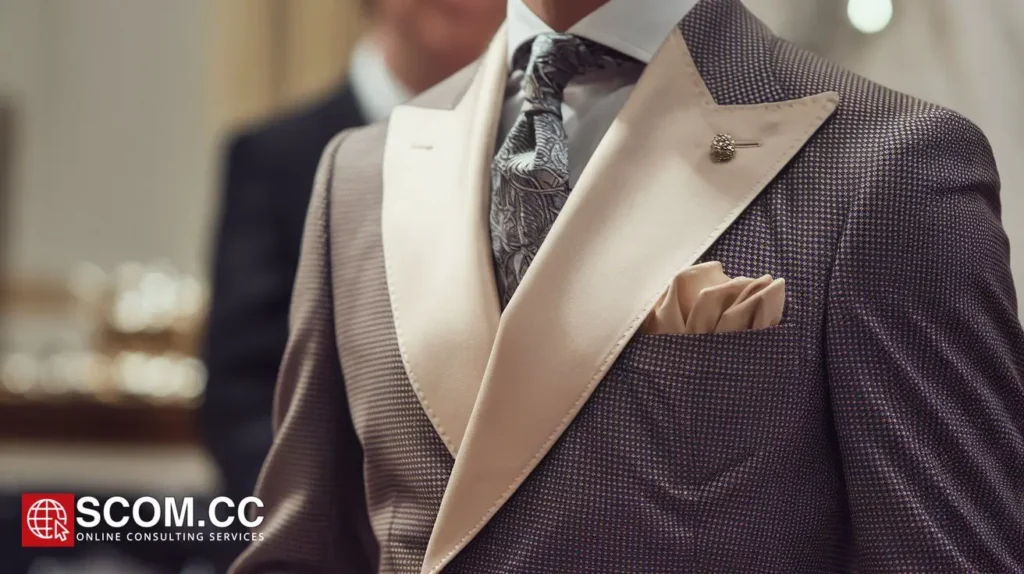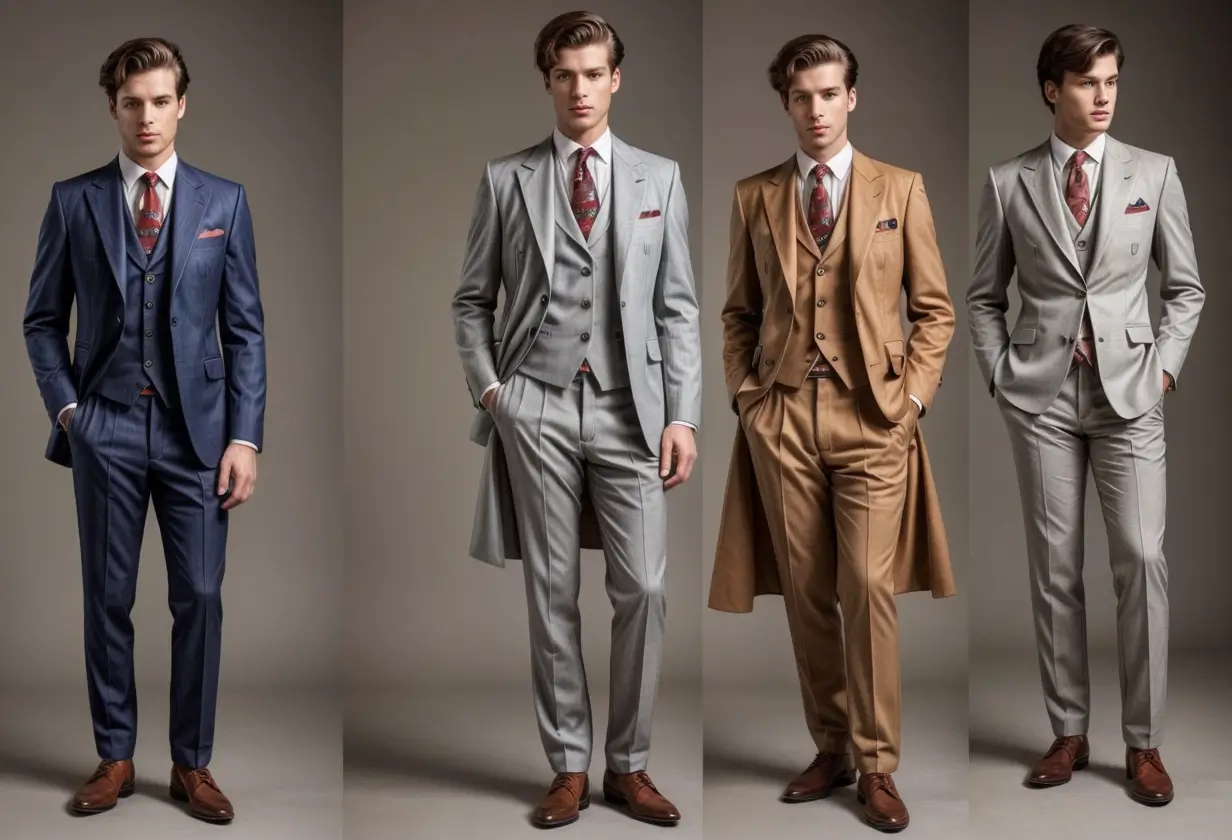What Are the Most Exciting Trends in DIY Tailoring Projects Right Now?

- What Are the Most Exciting Trends in DIY Tailoring Projects Right Now?
- Sustainable and Upcycled Fashion
- Customization and Personalization
- Vintage and Retro Revival
- Bold Prints and Patterns
- Minimalist and Functional Designs
- Digital Tools and Technology
- Gender-Neutral and Inclusive Fashion
- Summary Table
-
FAQ
- 1. What are some easy DIY tailoring projects for beginners?
- 2. How can I upcycle old clothes into something new?
- 3. What materials are best for sustainable DIY tailoring projects?
- 4. How can I add personalization to my DIY garments?
- 5. What are some popular vintage patterns for DIY tailoring?
- 6. How do I mix and match prints effectively?
- 7. What are some practical elements to include in DIY garments?
What Are the Most Exciting Trends in DIY Tailoring Projects Right Now?
DIY tailoring projects have seen a resurgence in popularity as more individuals seek to personalize their wardrobe and explore their creativity. The convergence of fashion, craftsmanship, and sustainability has birthed a range of exciting trends in the realm of DIY tailoring. This article highlights the most compelling trends in DIY tailoring right now, offering a detailed look at how these innovations are reshaping the world of home sewing and garment customization.
Sustainable and Upcycled Fashion
Eco-Friendly Materials
The trend towards sustainable fashion has significantly influenced DIY tailoring. Using eco-friendly materials like organic cotton, bamboo fabric, and recycled polyester allows crafters to create garments that are both stylish and environmentally conscious.
Upcycling Old Garments
Upcycling is a major trend in DIY tailoring. Transforming old or thrifted garments into new, fashionable pieces not only extends the life of clothing but also reduces waste. Popular techniques include distressing jeans, reconstructing vintage dresses, and revamping old sweaters.
Customization and Personalization
Monogramming and Embroidery
Personalization remains a strong trend. Adding monograms, embroidery, or appliqué to garments can make them uniquely yours. Tailors and DIY enthusiasts are incorporating intricate designs and custom text to reflect individual style and sentiment.
DIY Patches and Badges
Creating or applying DIY patches and badges is another way to add a personal touch to clothing. These can be custom-designed or bought ready-made and are perfect for customizing jackets, jeans, and bags.
Vintage and Retro Revival

Retro Patterns and Styles
Vintage fashion is making a comeback in the DIY tailoring scene. Many enthusiasts are recreating retro patterns and classic styles from past decades. This includes high-waisted pants, A-line skirts, and vintage blouses.
Sewing Techniques from the Past
Traditional sewing techniques are also gaining renewed interest. Techniques such as tailoring by hand, draping, and hand-stitched detailing offer a touch of old-world craftsmanship in modern DIY projects.
Bold Prints and Patterns

Mixing Patterns
Bold prints and patterns are increasingly popular in DIY tailoring. Combining floral prints, geometric designs, and animal patterns can create visually striking garments. DIY enthusiasts are experimenting with pattern mixing to achieve unique looks.
Statement Fabrics
Using statement fabrics such as velvet, sequins, and metallics can turn a simple design into something extraordinary. These fabrics are used to make standout pieces like statement skirts and glitzy evening wear.
Minimalist and Functional Designs
Simple Silhouettes
The minimalist trend emphasizes clean lines and simple silhouettes. DIY tailors are focusing on creating garments with elegant simplicity, such as shift dresses, boxy tops, and classic trousers.
Functional Elements
Incorporating functional elements like pockets, adjustable straps, and convertible designs enhances the practicality of DIY projects. Functional fashion that combines style with utility is increasingly popular.
Digital Tools and Technology
Embroidery Machines and Sewing Software
Advancements in technology have transformed DIY tailoring. Embroidery machines and sewing software allow for precise customization and more complex designs. Software programs enable users to create digital patterns and preview them before sewing.
Online Tutorials and Pattern Shops
The availability of online tutorials and digital pattern shops has made DIY tailoring more accessible. Tailors can find a wealth of resources and patterns online, including instructional videos and downloadable patterns.
Gender-Neutral and Inclusive Fashion
Gender-Neutral Designs
The trend towards gender-neutral fashion is also influencing DIY tailoring. Creating garments that transcend traditional gender boundaries—such as oversized shirts, unisex pants, and fluid silhouettes—allows for greater inclusivity and personal expression.
Inclusive Sizing
DIY tailors are increasingly focusing on inclusive sizing, creating patterns and designs that cater to a diverse range of body types. This trend supports the creation of well-fitting garments for all individuals.
Summary Table
| Trend | Description | Examples | Benefits |
|---|---|---|---|
| Sustainable and Upcycled Fashion | Use of eco-friendly materials and upcycling old garments | Organic fabrics, thrifted garment transformations | Environmentally friendly, reduces waste |
| Customization and Personalization | Adding personal touches through embroidery and patches | Monograms, DIY patches, custom badges | Unique, personalized garments |
| Vintage and Retro Revival | Recreating vintage styles and sewing techniques | Retro patterns, high-waisted pants, hand-stitched details | Nostalgic, classic looks with modern twists |
| Bold Prints and Patterns | Experimenting with bold and mixed prints | Floral and geometric patterns, statement fabrics | Visually striking, creative fashion statements |
| Minimalist and Functional Designs | Emphasis on simplicity and practicality | Simple silhouettes, functional elements like pockets | Elegant, versatile garments with practical features |
| Digital Tools and Technology | Utilization of modern technology for DIY projects | Embroidery machines, sewing software, online patterns | Enhanced precision, accessible resources |
| Gender-Neutral and Inclusive Fashion | Creating garments that are inclusive and non-binary | Unisex designs, inclusive sizing | Greater inclusivity, diverse fitting options |
FAQ
1. What are some easy DIY tailoring projects for beginners?
Beginners can start with simple projects like pillow covers, fabric tote bags, or basic skirts. These projects require minimal sewing skills and are great for building confidence.
2. How can I upcycle old clothes into something new?
Consider techniques like dyeing, adding new details (like pockets or embroidery), or reconstructing the garment into a new style. For example, turn old jeans into a denim skirt or a sweater into a scarf.
3. What materials are best for sustainable DIY tailoring projects?
Look for materials like organic cotton, bamboo fabric, and recycled textiles. These fabrics are eco-friendly and often have a lower environmental impact.
4. How can I add personalization to my DIY garments?
You can add personalization through embroidery, appliqué, custom patches, or fabric paint. These methods allow you to incorporate initials, designs, or unique details.
5. What are some popular vintage patterns for DIY tailoring?
Popular vintage patterns include A-line skirts, high-waisted trousers, and retro blouses. These patterns often feature classic silhouettes and can be updated with modern fabrics.
6. How do I mix and match prints effectively?
To mix prints effectively, use prints that have a common color palette or scale. Combine larger prints with smaller ones for balance, and keep other garment elements simple to avoid overwhelming the design.
7. What are some practical elements to include in DIY garments?
Consider adding pockets, adjustable straps, or convertible designs that can be worn in multiple ways. These elements increase the functionality and versatility of your creations.

To explore more about tailoring, visit our Blog of Tailoring. If you have any questions or need assistance, go to our contact page. Additionally, you can find more information about tailoring and consulting at this tailoring and consulting portal.

Leave a Reply